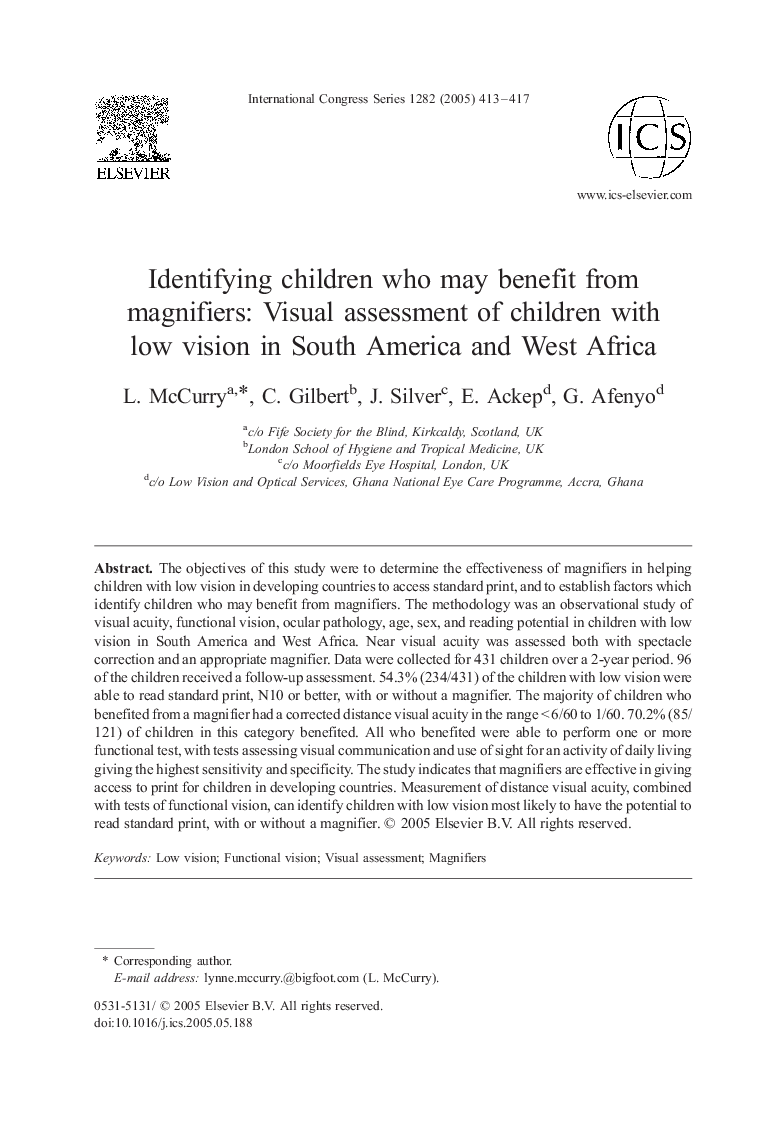| Article ID | Journal | Published Year | Pages | File Type |
|---|---|---|---|---|
| 9021701 | International Congress Series | 2005 | 5 Pages |
Abstract
The objectives of this study were to determine the effectiveness of magnifiers in helping children with low vision in developing countries to access standard print, and to establish factors which identify children who may benefit from magnifiers. The methodology was an observational study of visual acuity, functional vision, ocular pathology, age, sex, and reading potential in children with low vision in South America and West Africa. Near visual acuity was assessed both with spectacle correction and an appropriate magnifier. Data were collected for 431 children over a 2-year period. 96 of the children received a follow-up assessment. 54.3% (234/431) of the children with low vision were able to read standard print, N10 or better, with or without a magnifier. The majority of children who benefited from a magnifier had a corrected distance visual acuity in the range <Â 6/60 to 1/60. 70.2% (85/121) of children in this category benefited. All who benefited were able to perform one or more functional test, with tests assessing visual communication and use of sight for an activity of daily living giving the highest sensitivity and specificity. The study indicates that magnifiers are effective in giving access to print for children in developing countries. Measurement of distance visual acuity, combined with tests of functional vision, can identify children with low vision most likely to have the potential to read standard print, with or without a magnifier.
Related Topics
Life Sciences
Biochemistry, Genetics and Molecular Biology
Molecular Biology
Authors
L. McCurry, C. Gilbert, J. Silver, E. Ackep, G. Afenyo,
